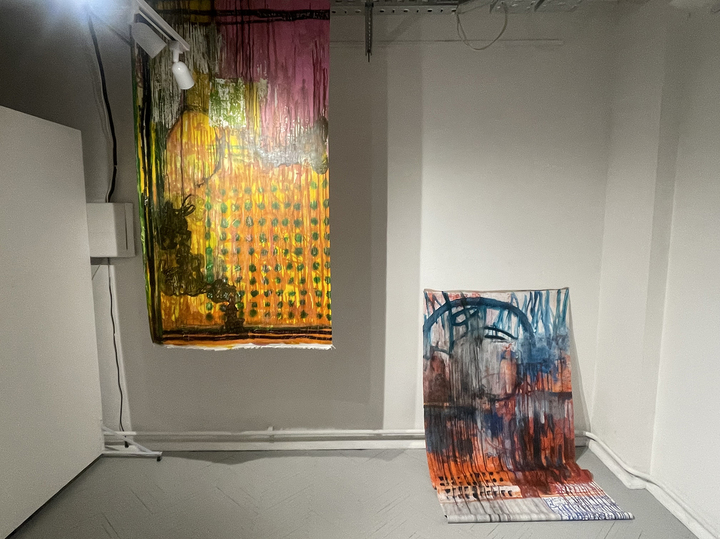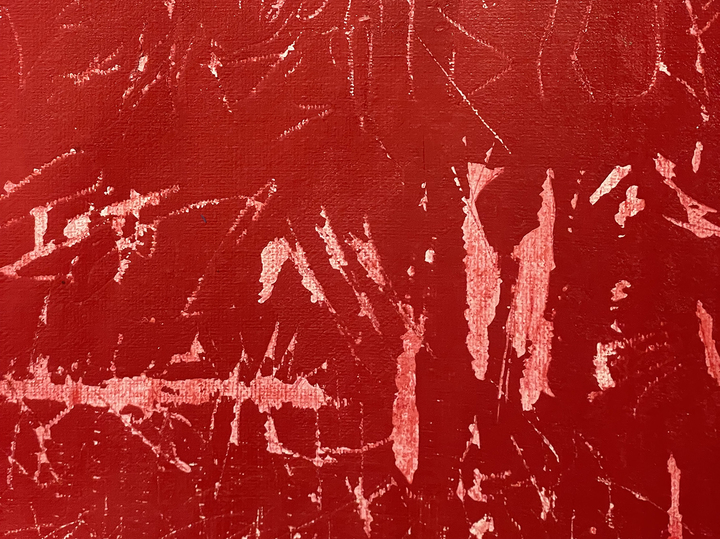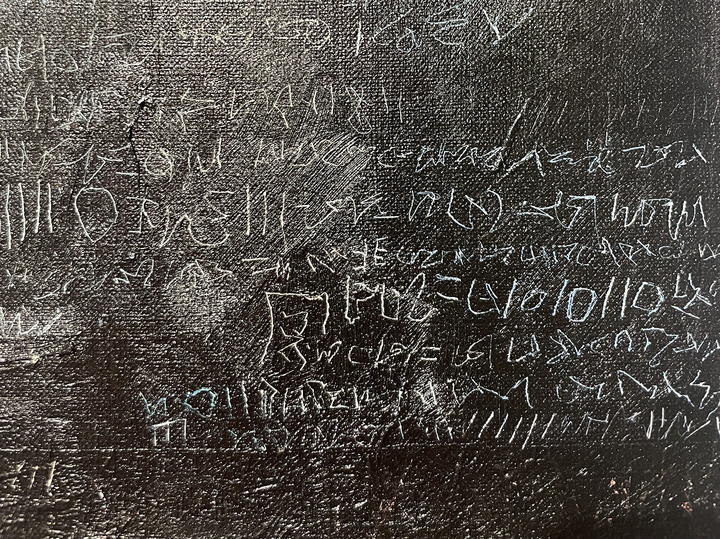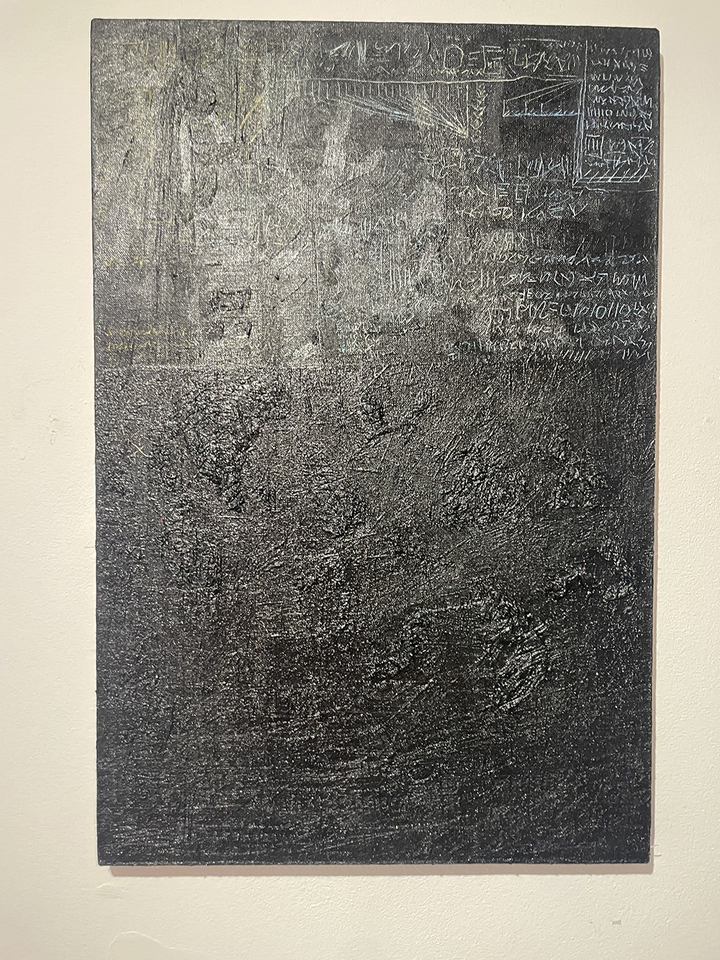The artist created a series of “speaking” abstractions from forgotten languages
[ad_1]
Mika Zohn scribbled meaningful nonsense
“Aleph” is the first letter of the Hebrew alphabet, corresponding to the letter of the Phoenician alphabet, which, in turn, is derived from the Egyptian hieroglyph. The original meaning of the letter resembling a bull’s head has not reached us, but now it is used in mathematics to denote an infinite set. This is the name given to the exhibition of the young artist Mika Zohn at the K320 gallery, which celebrated its second anniversary with this project. The 26-year-old artist created a series of abstractions by scratching texts on canvas in ancient forgotten languages that are impossible to read.
Gallery K320 is a phenomenon in itself. At the beginning of 2022, two girls, artist Nastya Belaya and art critic Sasha Boeva, turned two rooms on one of the floors of a huge former administrative building of a large energy company into an independent site for contemporary art. They created a place for quiet cultural meetings where young artists could show new works. Several hundred authors have already sent their proposals to the current competition. And it must be said that interest in such behind-the-scenes places, where there are no random people, is growing. In the art environment, there is an unprecedented boom in art apartments and local galleries that do not set any commercial goals, but focus on intellectual communication.

The exhibition “Aleph” by Mika Zohn, created especially for this place, is the perfect place for reflection. In the first room there are only three works – one entirely red and two entirely black. Only at first glance from afar it is a pure color. If you look closely, each work is scratched with incomprehensible letters. All of them are taken from languages that people wrote thousands of years ago and which modern people cannot decipher. There must be wisdom and knowledge hidden in extracts from ancient texts, but they are not available to us. The inscriptions are layered on top of each other, sometimes painted over with several layers of paint, on top of which there is also text and another layer. Moreover, the letters are not written on canvas, but scratched (this technique is called grattage), and resemble primitive drawings of the Stone Age or primitive serif counting.

“It’s a paradox that people draw knowledge from the past, but the understanding of the most ancient writing has been lost. Here the meaning of the original source is erased, turning into an abstraction. Nowadays it is difficult to come up with symbols that do not mean anything. And the artist succeeded – he created a text without text. The point is that we are faced with complete nonsense, which says nothing and at the same time says everything,” says Nastya Belaya.

It is no coincidence that the curator of the exhibition, Roman Shalganov, included as an epigraph in the description of the exhibition a quote from the “Library of Babel” by the Argentine writer Jorge Luis Borges: “I know a wild land where librarians abandoned the superstitious and vain habit of looking for meaning in books, believing that it is all the same why look for it in dreams or in the random lines of the hand… They admit that those who invented writing imitated twenty-five natural signs, but they claim that their use is accidental.”

In the second room, however, abstraction takes on vague outlines. There are three more works here, created with several colors using drips. One of them is draped over a false wall, like a towel over a dryer. A mysterious ornate line from an unknown ancient source of knowledge runs along the edge of the canvas in black streaks. Nearby are two more works that form a pair. On one, colorful drops flow upward, on the other, downward. One is suspended near the ceiling, the other half lies on the floor. In each of them you can imagine a subject plot. It seems that there is a window sill with a smoldering candle, there is a high-rise building with endless windows, and there, in the distance, is a bridge with round arches. But with the same ease, all these images can turn out to be a mirage of one viewer. Another will see something of his own. The human consciousness, at a reflexive level, is accustomed to searching for meaning. The longer you look, the more it seems that you catch the subtext in conventional symbols, and the more you understand that behind the appeal to ancient writings there is a connection with modern language, where a statement can have a polar meaning or none at all.
[ad_2]
Source link






